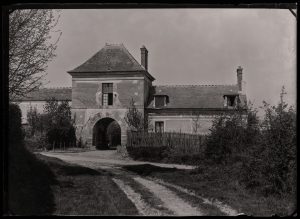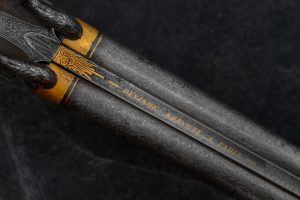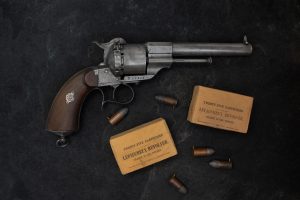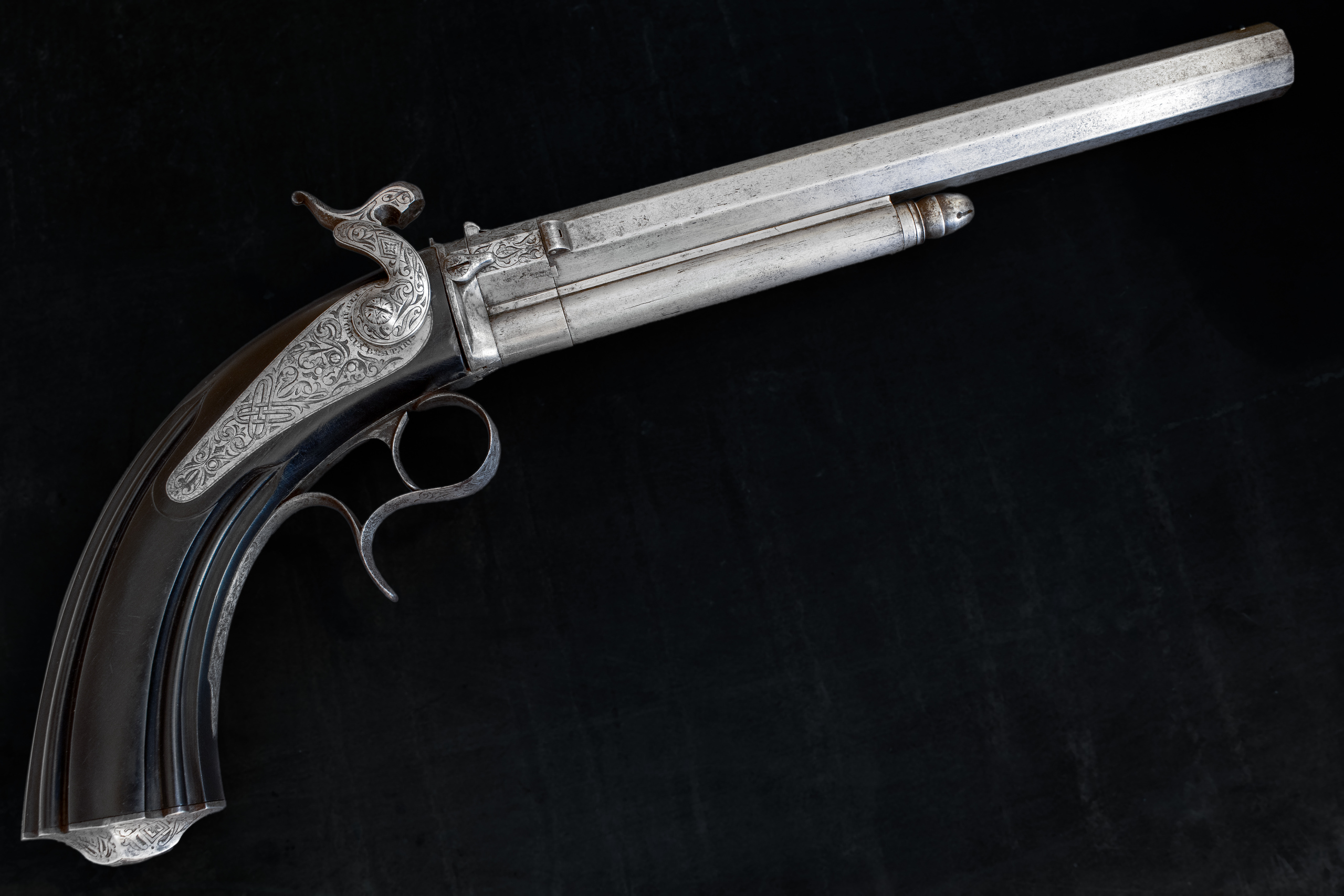
In the world of antique firearms, few names are as significant as Casimir Lefaucheux. Born in 1802, Lefaucheux is renowned for his pioneering advancements, particularly the revolutionary pinfire cartridge. This invention simplified the loading process, making firearms more reliable and efficient. However, among his many contributions is a lesser-known yet fascinating creation: the central percussion pistol. This firearm, often overshadowed by his more famous works, represents an important chapter in the evolution of firearm technology, blending innovation with exceptional craftsmanship.
Lefaucheux’s fascination with firearm mechanisms began in his youth. As a budding gunsmith, he was dedicated to simplifying and improving the complex processes involved in firearm operation. The pinfire cartridge, his most well-known invention, eliminated the need for separate priming, thus making firearms easier to use and significantly enhancing their reliability. This innovation brought Lefaucheux international recognition, but it is his central percussion pistol—a lesser-known yet equally impressive creation—that stands as a testament to his relentless pursuit of improvement and excellence in firearm design.
The Central Percussion Pistol: A Lesser-Known Innovation
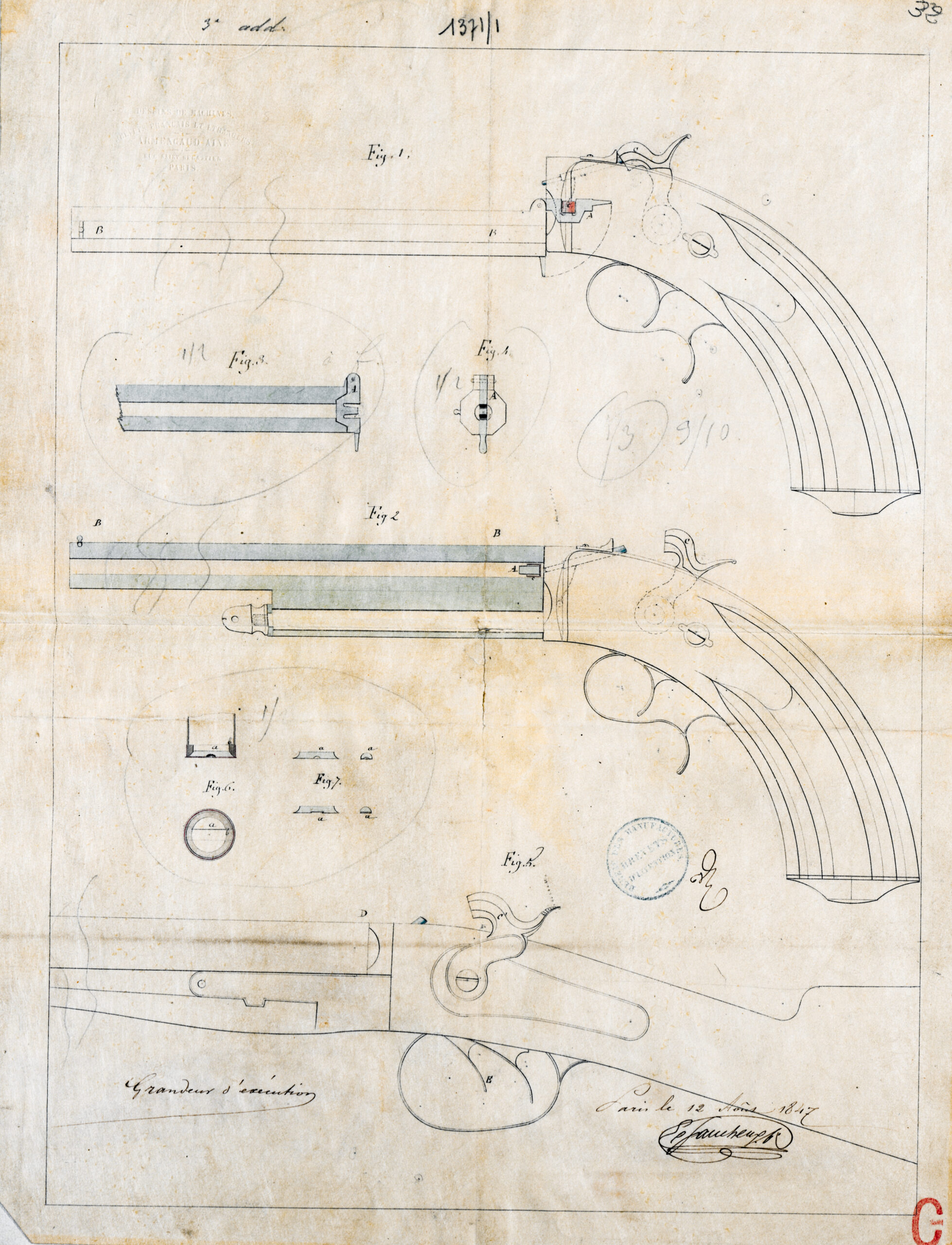
Patented on August 13, 1847, as the third addition to Patent No. 1371, the central percussion pistol by Casimir Lefaucheux highlights a unique development in firearm technology. Unlike many of his other firearms, this particular pistol was designed as a fulminate-propelled parlor pistol, similar to the early designs of Béatus Béringer. Instead of using traditional gunpowder, this pistol relied on a fulminate-based system for propulsion, a method that was advanced and unusual for its time.
The central percussion system in this pistol utilized a percussion cap placed on an anvil at the back of the open breech. When struck, the cap ignited the fulminate compound, which then propelled a 6mm ball down the barrel. This design ensured consistent ignition and significantly reduced the risk of misfires, making the firearm more reliable. The pivoting barrel allowed for easy loading and reloading, enhancing the practicality of the pistol for various uses, including indoor target shooting, a common activity in the 19th century.
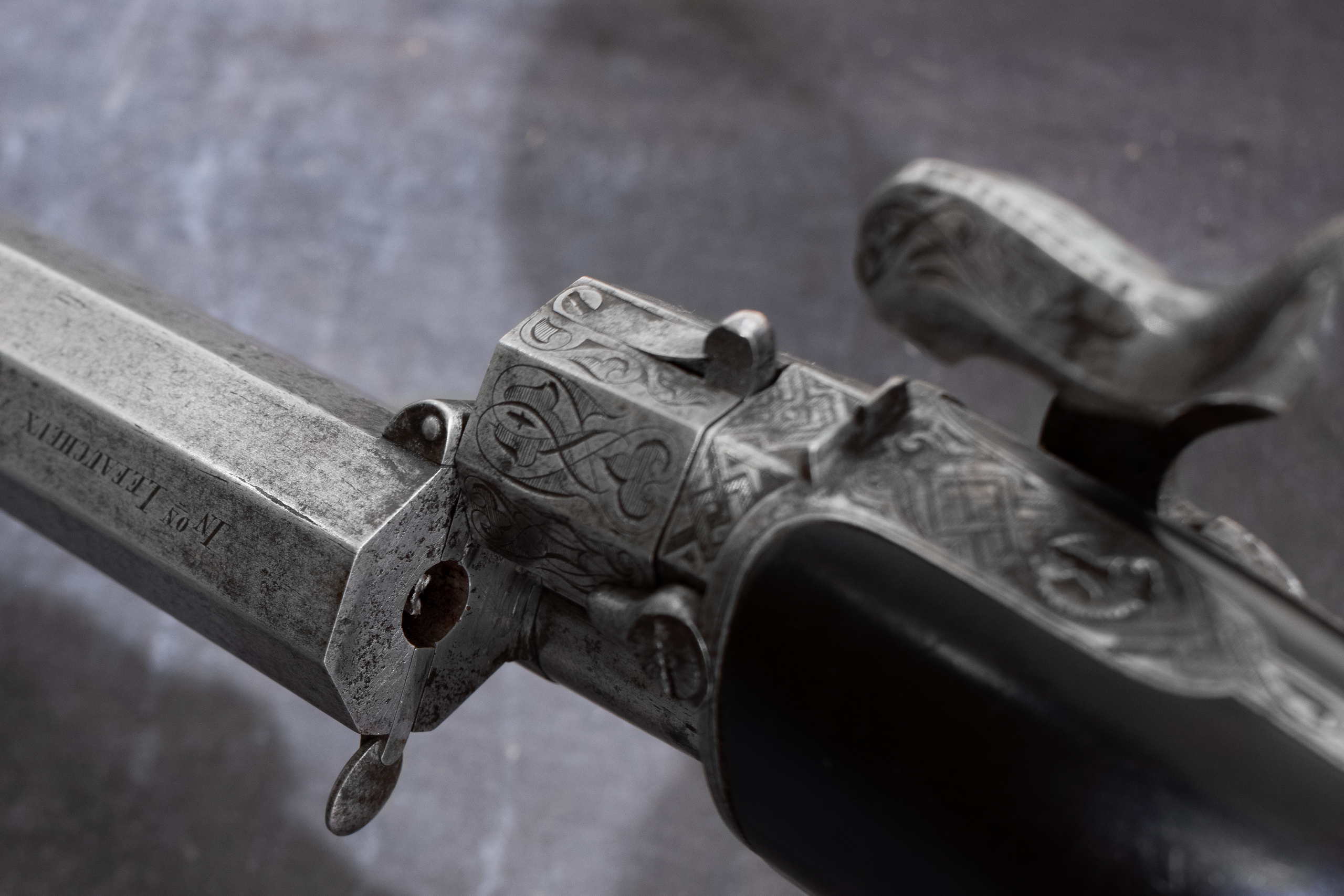
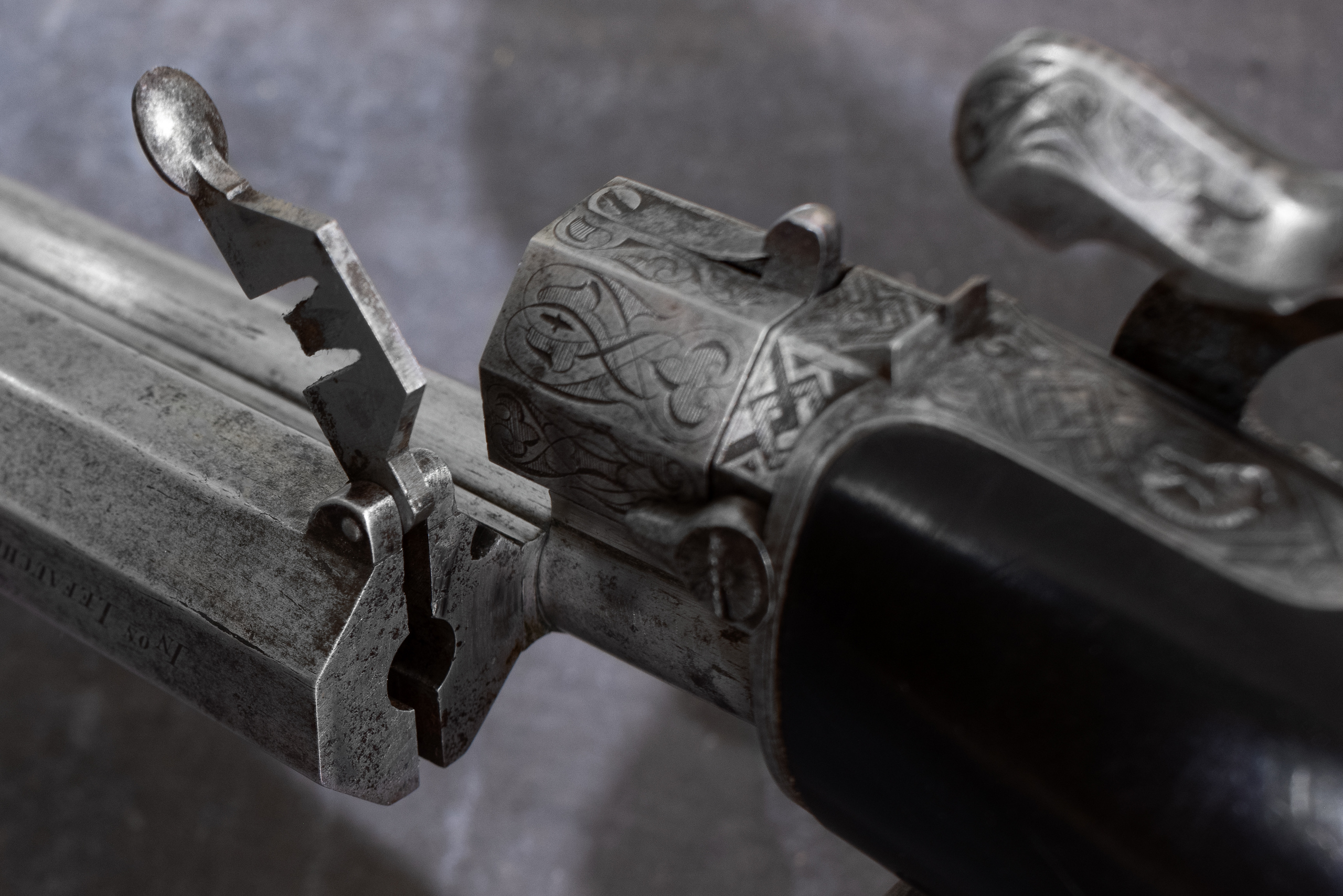
This fulminate-propelled mechanism marked a departure from traditional gunpowder-based systems and demonstrated Lefaucheux’s commitment to exploring new technologies to improve firearm efficiency. The craftsmanship of the central percussion pistol is notable for its intricate details and elegant design. Lefaucheux, known not only as an innovator but also as a master artisan, incorporated elaborate engravings and thoughtful design elements into the pistol. The handle and barrel feature detailed engravings that reflect the high standards of quality and precision for which Lefaucheux was renowned.
A fifth patent addition to this patent introduced a number of enhancements and configurations for breech-loading pistols. One key innovation was the development of multiple firing pin configurations, allowing for flexibility in how the pistol could be loaded and fired. This included systems designed to handle both traditional and fulminate-based ignition methods. The patent’s focus on adaptability ensured that Lefaucheux’s designs could meet the diverse needs of users, enhancing both performance and safety.


The patent also detailed improvements aimed at reinforcing the breech mechanism to handle the increased pressures from various types of ammunition, including fulminate-propelled rounds. This adaptability was a critical advancement, as it provided a robust and reliable platform for the pistol’s operation. Lefaucheux’s approach to firearm design emphasized not only innovation but also practical solutions to the challenges posed by different types of ammunition and firing conditions. These refinements helped ensure that the pistol could maintain its functionality and reliability, regardless of the specific firing mechanism or ammunition type used.
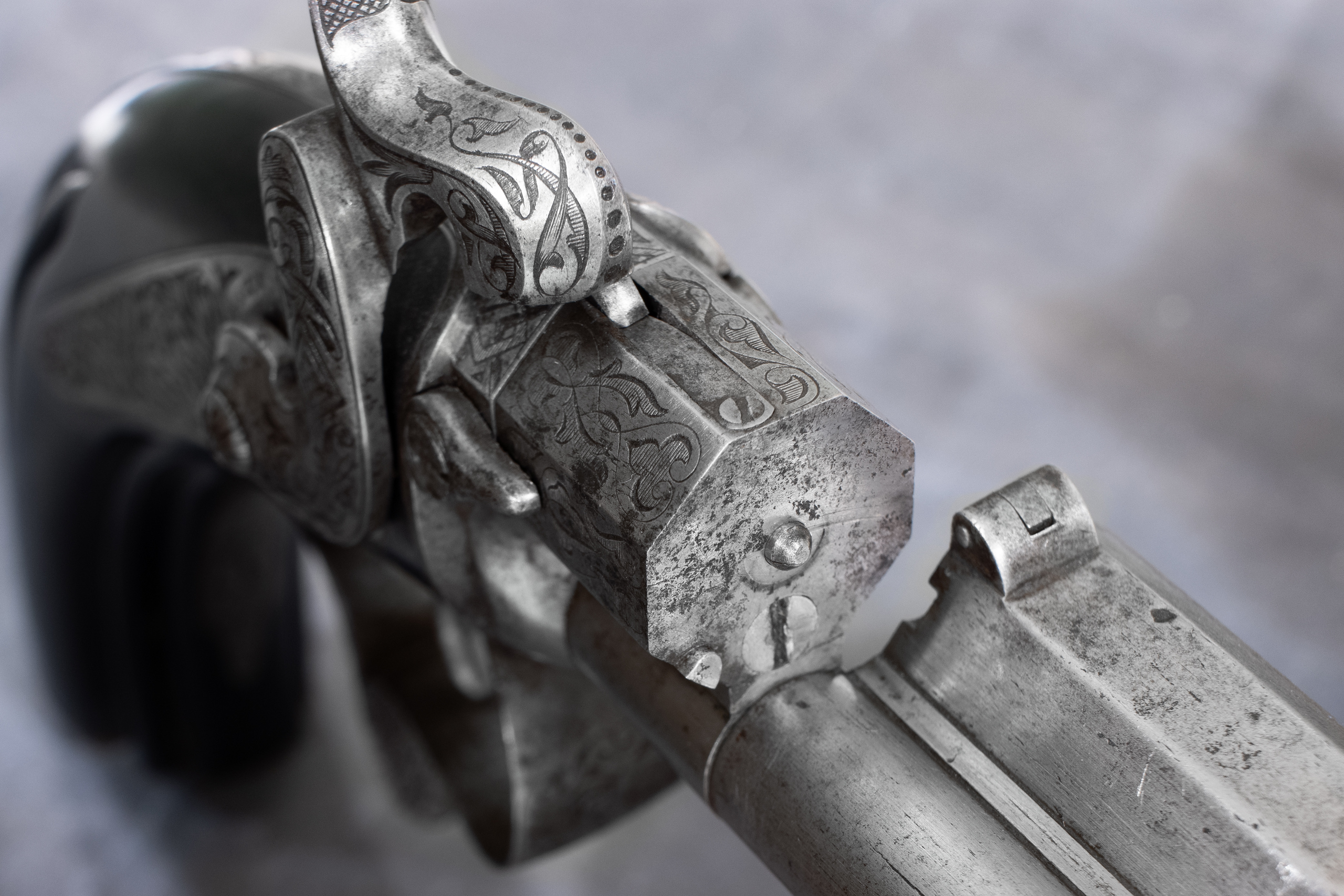
Each component of the pistol, from the finely detailed lockplate to the sophisticated spring-loaded firing pin, showcases Lefaucheux’s dedication to precision and craftsmanship. This meticulous attention to detail made his firearms highly prized among European nobility and collectors, further cementing his reputation as a leading gunsmith of his time. The central percussion pistol, with its unique blend of advanced technology and aesthetic appeal, remains a testament to Lefaucheux’s innovative spirit and his ability to combine functionality with artistry in firearm design.
The Relationship with Béatus Béringer
The central percussion pistol is also tied to a broader narrative involving Lefaucheux and his contemporary, Béatus Béringer. Born in 1801, Béringer was a significant figure in the development of fulminate-based ignition systems, which used explosive compounds like mercury fulminate to provide a reliable and quick ignition source for firearms, making them more efficient than earlier flintlock mechanisms. The relationship between Lefaucheux and Béringer was complex, marked by both collaboration and legal disputes over various firearm technologies. Their interactions reflect a dynamic interplay of competition and mutual influence that propelled advancements in firearm technology.
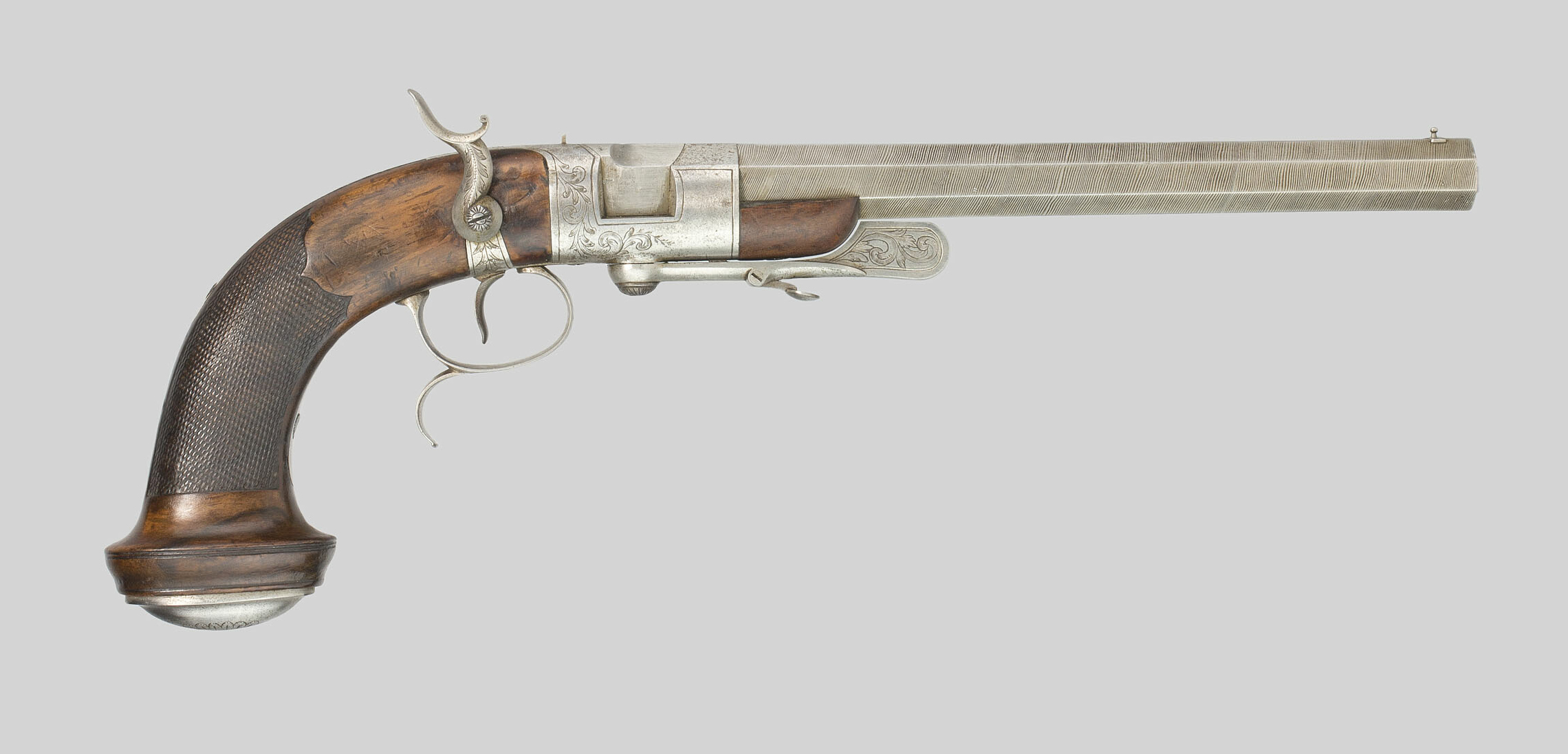
Béringer’s work with fulminate-based ignition systems likely influenced Lefaucheux’s central percussion pistol. Fulminates, such as mercury fulminate, were crucial for providing a consistent and rapid ignition, which was essential for the reliable operation of more advanced firearms. Béringer’s designs, patented in the early 1830s, included innovations that improved the versatility and performance of firearms. The exchange of ideas and innovations between Lefaucheux and Béringer highlights how the development of new technologies often involves a collaborative and competitive process, driving significant advancements in the field.
Craftsmanship and Legacy of Lefaucheux’s Central Percussion Pistol
The central percussion pistol is a striking example of both technological advancement and superior craftsmanship. Casimir Lefaucheux’s meticulous attention to detail is evident in every aspect of the pistol’s design. The intricate engravings and carefully crafted components reflect his unwavering commitment to quality and excellence. This firearm, with its unique blend of advanced technology and aesthetic appeal, exemplifies Lefaucheux’s ability to seamlessly merge form and function in his designs.

Lefaucheux’s dedication to craftsmanship is further showcased in the intricate details of this pistol, from the finely engraved lockplate to the precision-engineered screws and mechanisms. The sophisticated spring-loaded firing pin and the intricately designed pivoting barrel reflect his commitment to combining functionality with aesthetics. Notably, the barrel bears the inscription “INon Lefaucheux Arqer Ordre de Mongr Le Duc de Nemours à Paris,” highlighting his esteemed role as gunsmith to royalty and underscoring the high regard for his work. This signature not only emphasizes the exceptional quality of his craftsmanship but also serves as a testament to his status as a master artisan whose creations were highly valued by European nobility.
These elements underscore the historical significance of Lefaucheux’s contributions to firearm technology and provide a tangible connection to the innovative spirit that drove his creations. While the central percussion pistol may not be as well-known as Lefaucheux’s pinfire firearms, it remains an important part of his legacy. This firearm reflects Lefaucheux’s ongoing efforts to enhance firearm safety and efficiency through innovative design. The central percussion pistol, though less famous, underscores the breadth of Lefaucheux’s contributions to the field and his impact on the evolution of modern firearms. By exploring this lesser-known artifact, we gain a deeper understanding of the ingenuity that shaped the development of modern firearms and celebrate the legacy of a remarkable inventor whose work continues to inspire and intrigue.
Citations & Further Research
Schneiderman, M., & Bradstreet, T. E. (n.d.). Fulminate propulsion: An unusual 19th-century path to cartridge firearms.
French Patent & Trademark Office. (1847, August 13). Patent no. 1371: Certificat d’addition. French Patent & Trademark Office Archives, Paris, France.
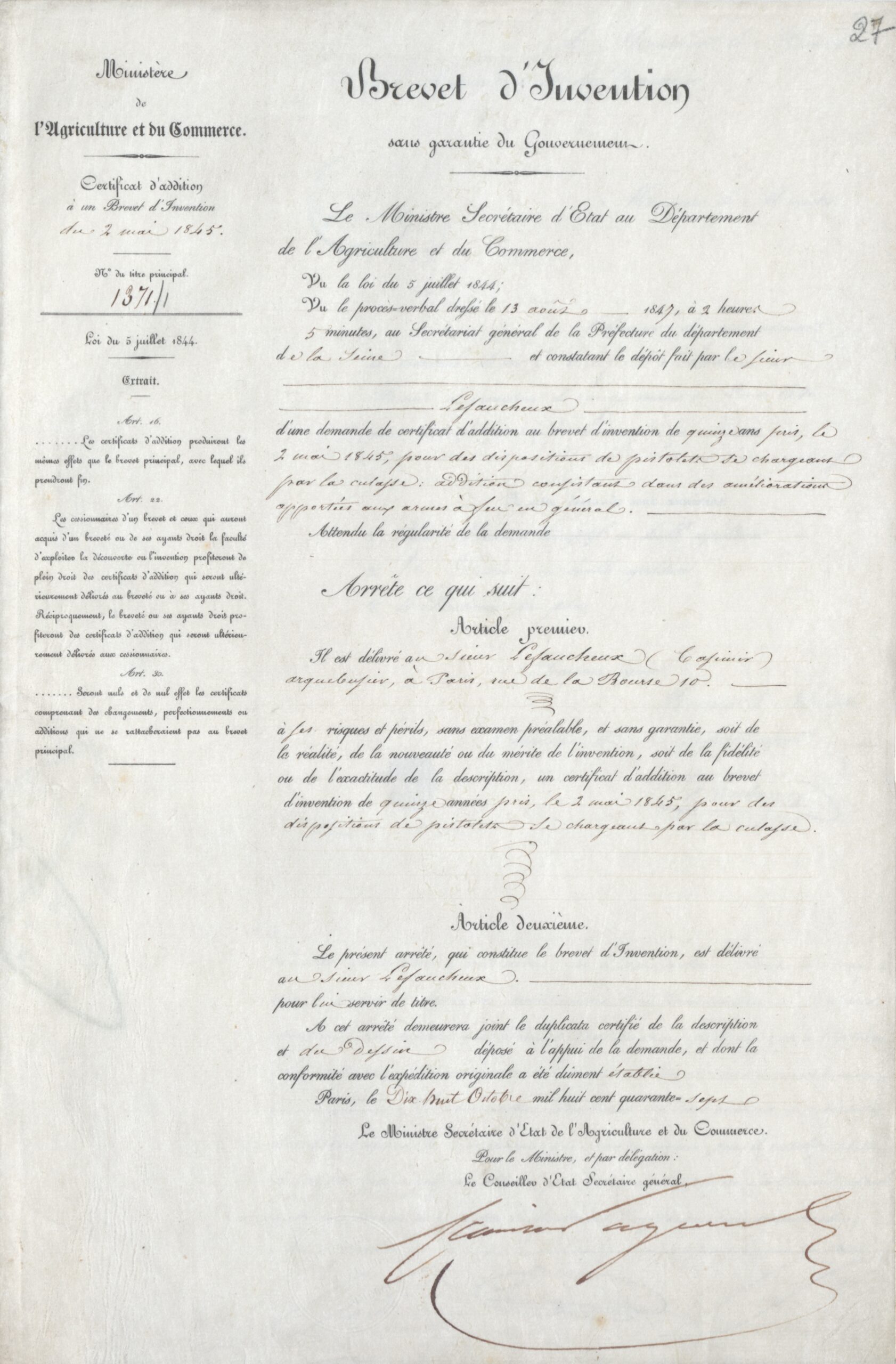
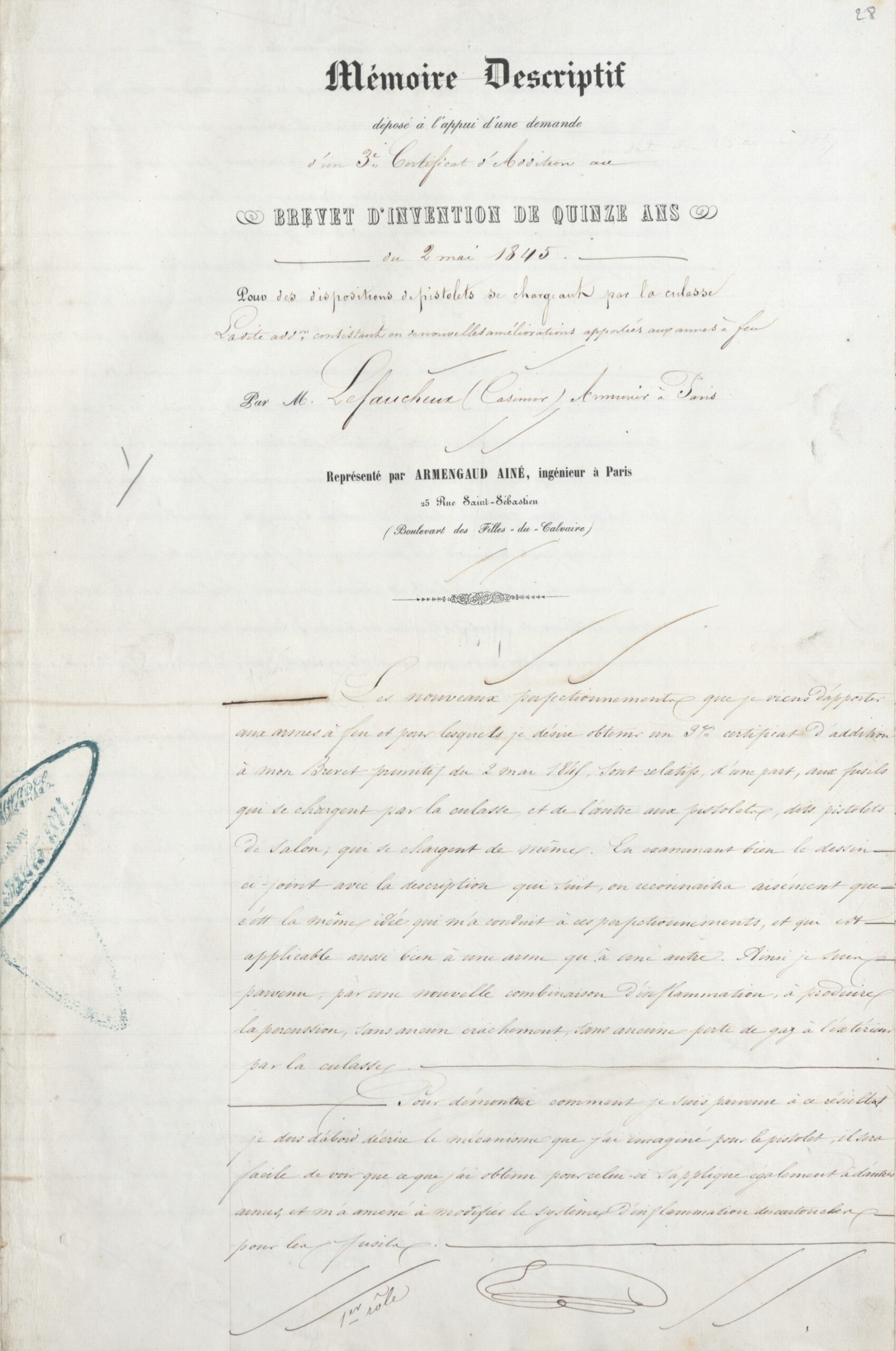
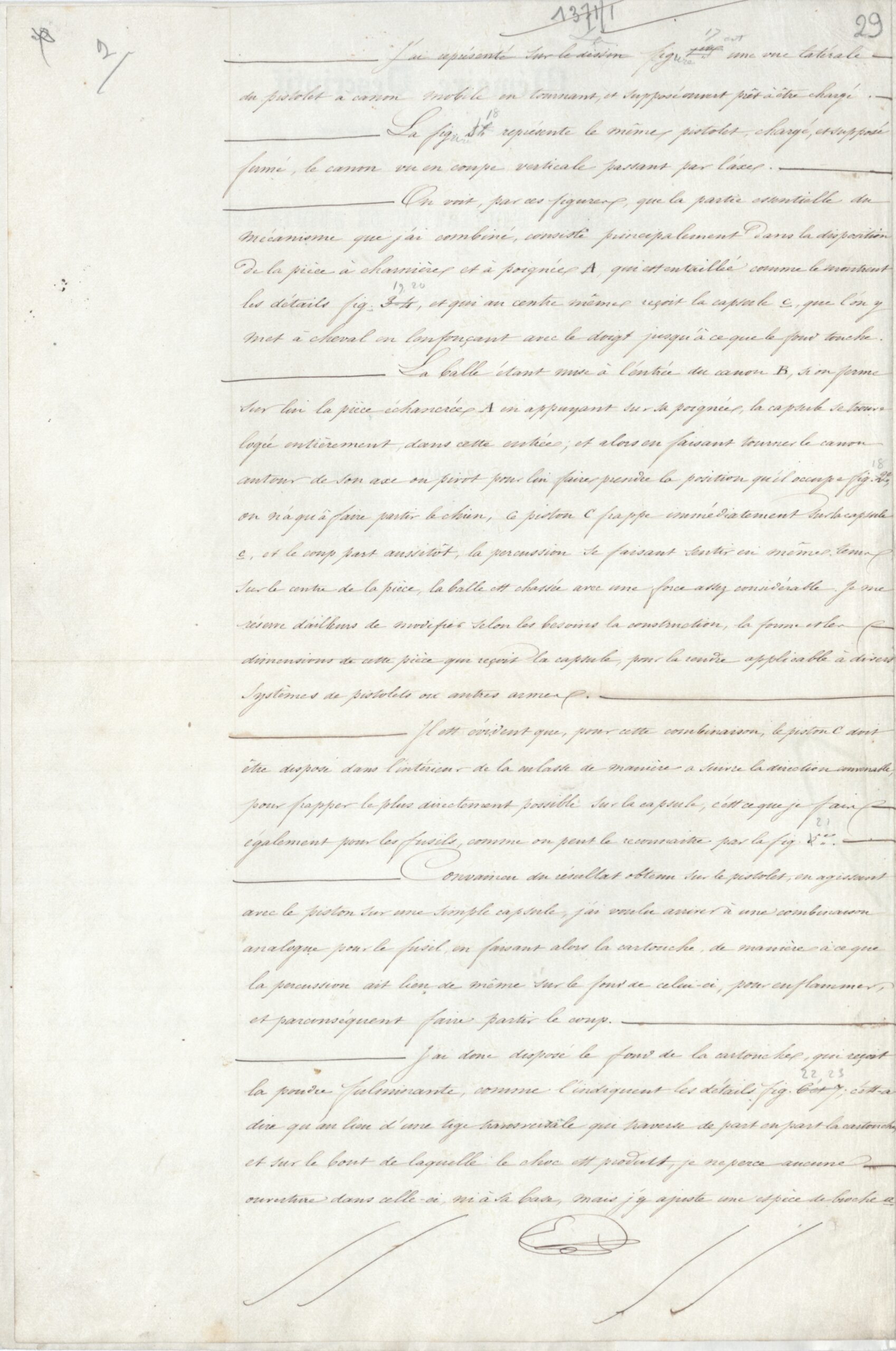

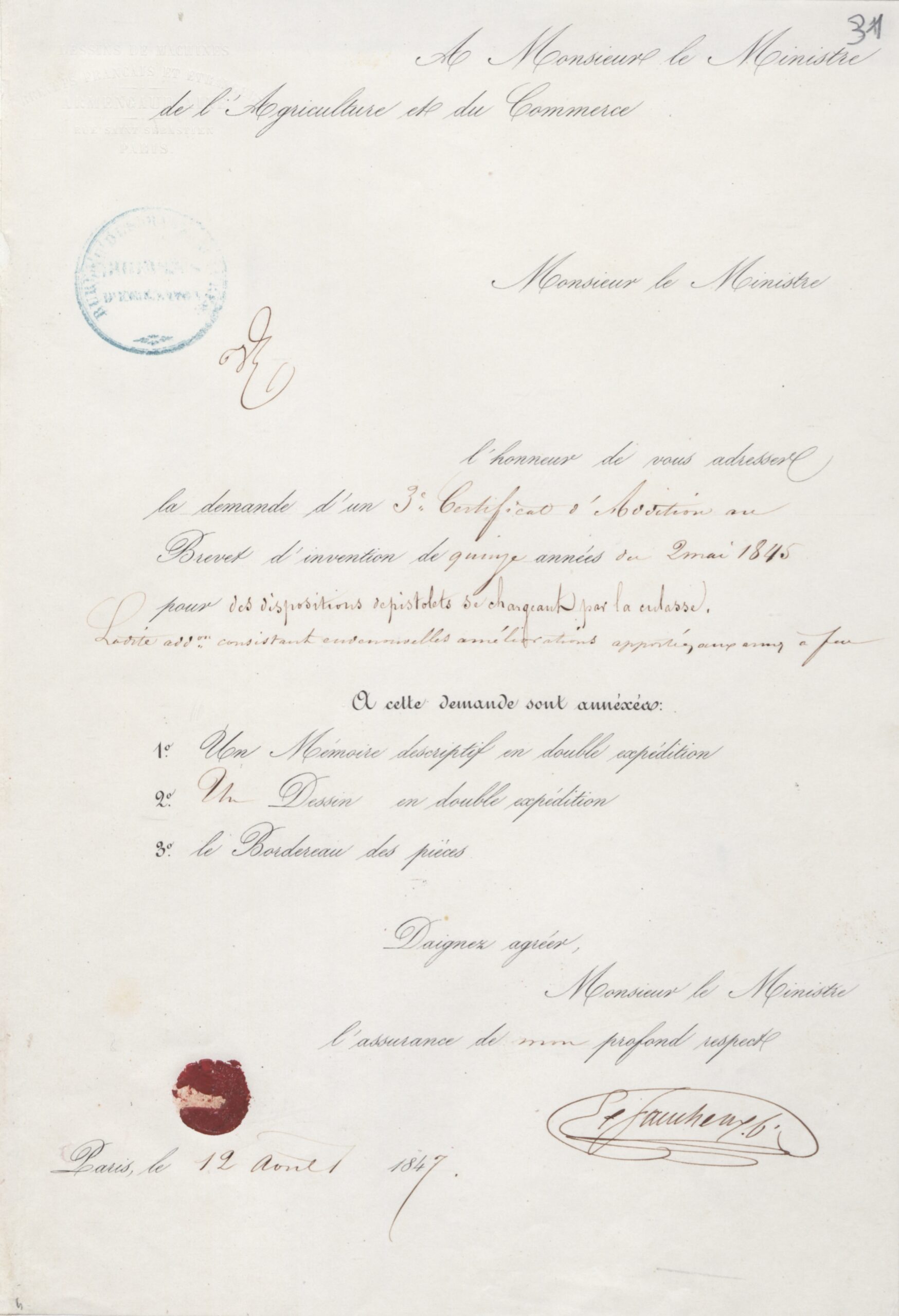
French Patent & Trademark Office. (1847, November 12). Patent no. 1371: Certificat d’addition. French Patent & Trademark Office Archives, Paris, France.
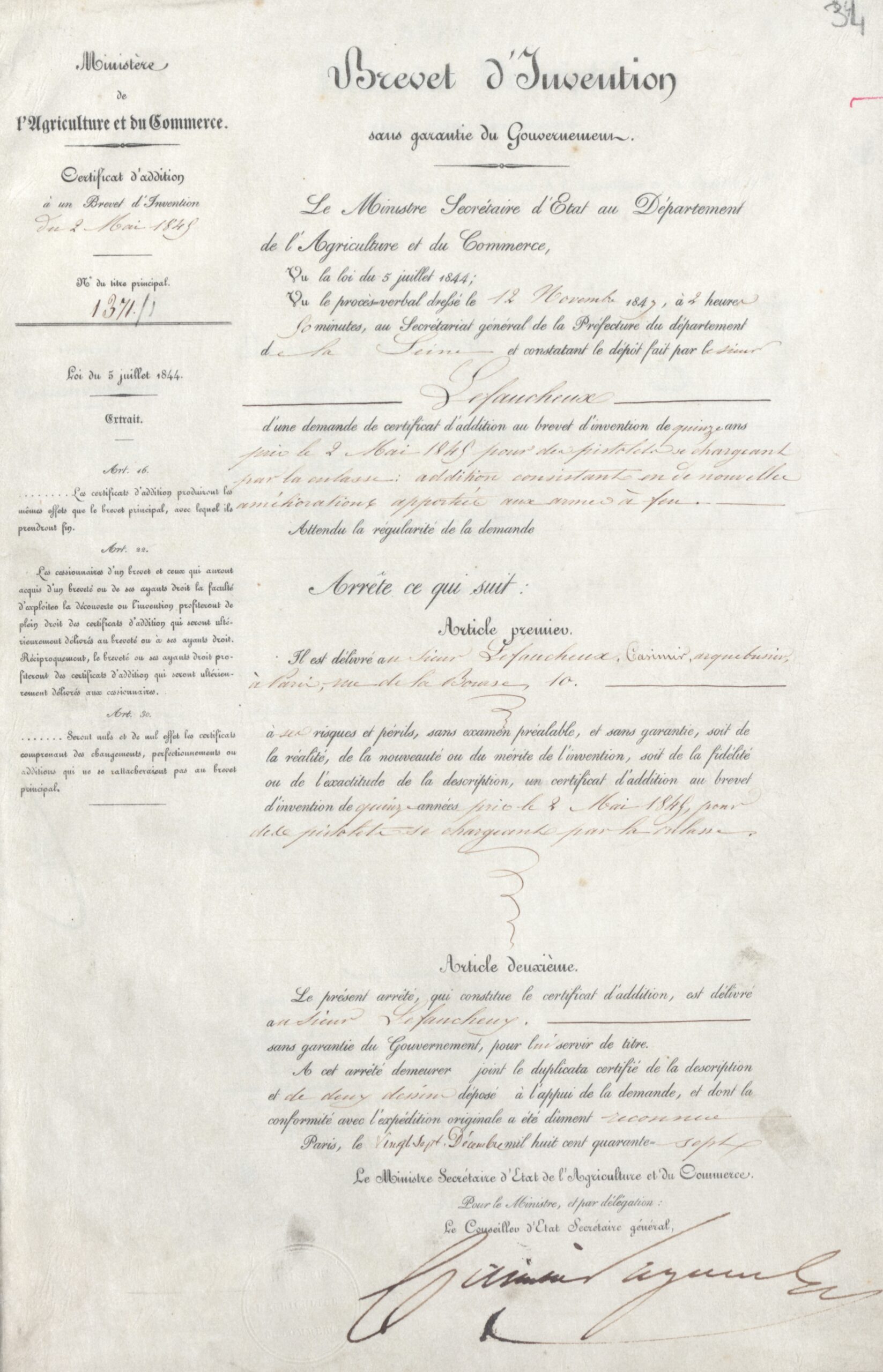
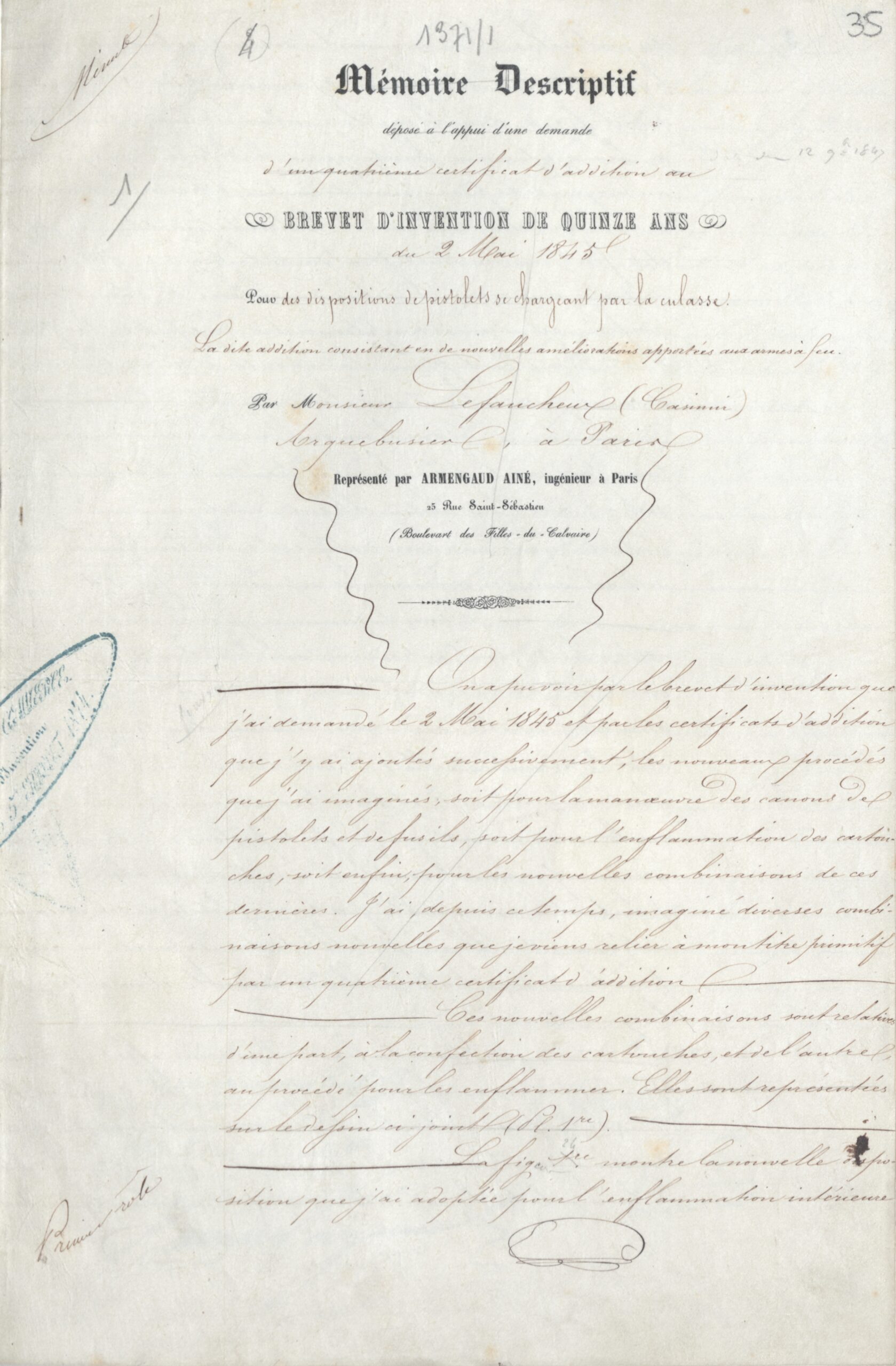
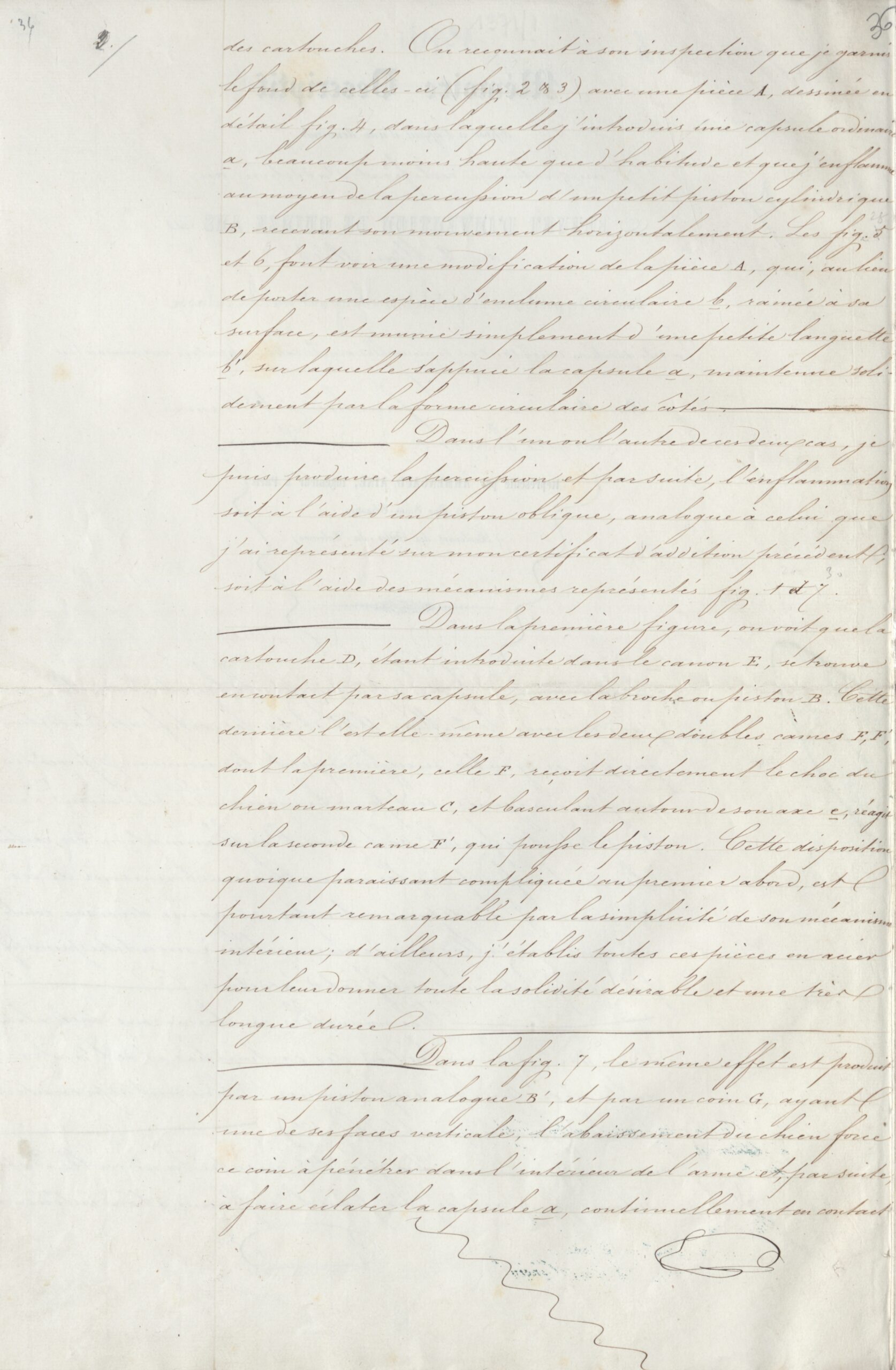
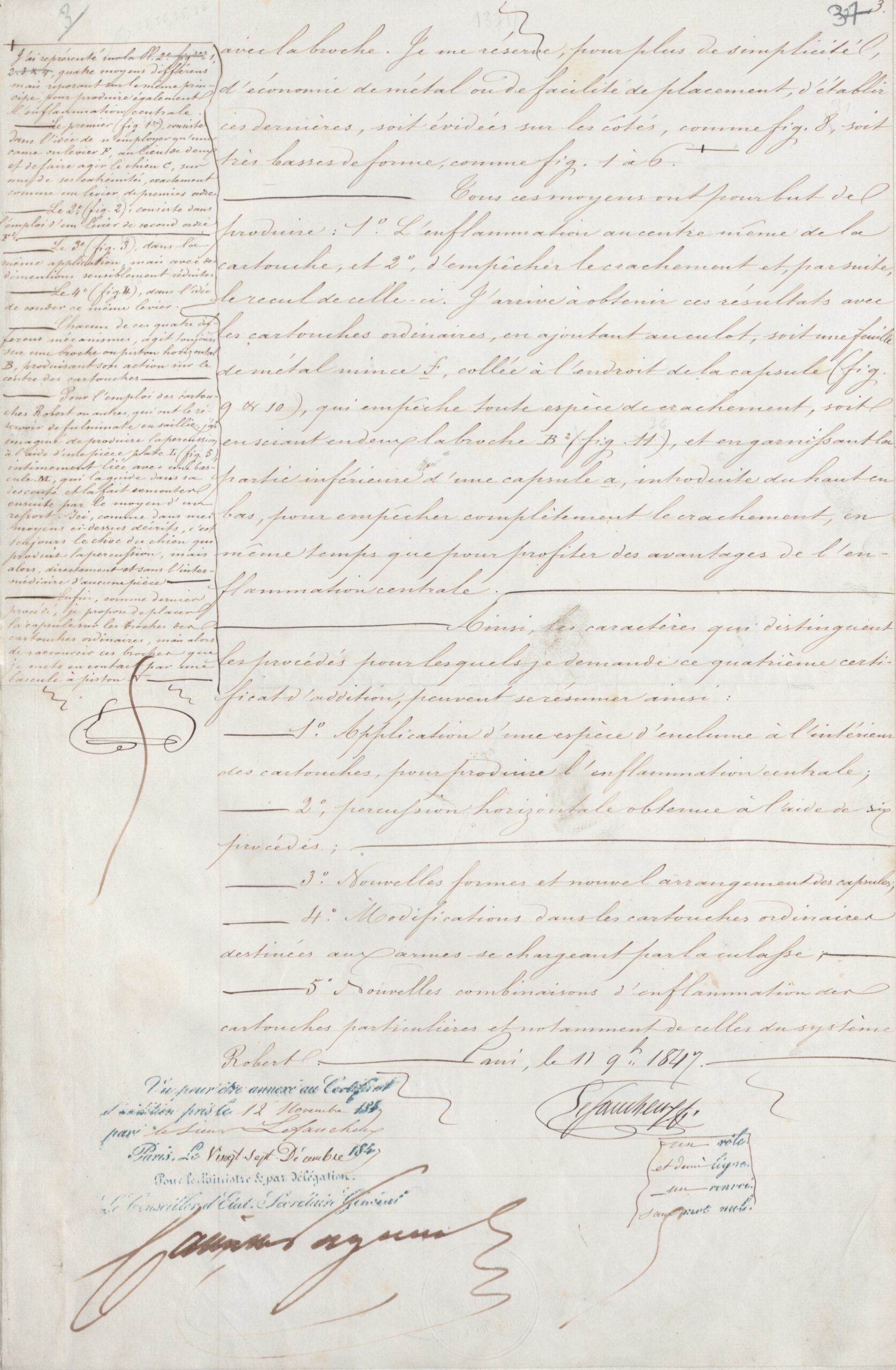

Newcomer, A. (2023, June). The Lefaucheux-Beringer connection: Uncovering the secrets of early pistols and cartridges. Lefaucheux. Retrieved from https://lefaucheux.com/the-lefaucheux-beringer-connection-uncovering-the-secrets-of-early-pistols-and-cartridges/
Art Institute of Chicago. (n.d.). Pair of breechloading percussion rifled dueling pistols. Retrieved from https://www.artic.edu/artworks/116702/pair-of-breechloading-percussion-rifled-dueling-pistols



